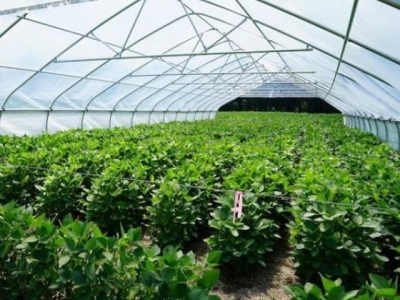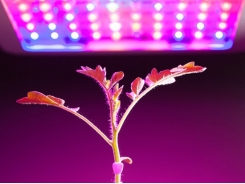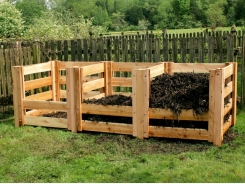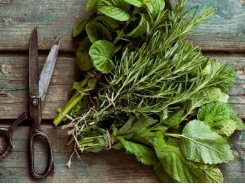Water-saving potential of crops identified

Study could help producers combat drought.
These are soybeans under a rainout shelter at the University of Tennessee's West Tennessee AgResearch and Education Center. These shelters are used to simulate drought conditions as scientists work to identify crops with water saving potential. Both soybeans and cotton are being evaluated. Photo: Credit: Ginger Rowsey
There is one ingredient that every single crop is absolutely dependent on: water.
Producers have implemented irrigation and fine-tuned cultural practices to make the most of available moisture, but soil conditions and unpredictable rainfall can still make crops vulnerable to yield-reducing drought, according to an announcement from the University of Tennessee.
Plants also lose gallons of water daily through transpiration. Transpiration, or the loss of water through plant tissue, accounts for more than 98% of water taken up by plants.
"Identifying plant physiological traits that minimize the impact of drought appears to be the best bet for increasing yields under water deficit conditions," said Avat Shekoofa, assistant professor with the University of Tennessee department of plant sciences. "One trait that shows great potential for conserving water among row crops is limited transpiration under high atmospheric vapor pressure deficit."
Vapor pressure deficit (VPD) is the difference between the water vapor pressure inside the leaf and the water vapor pressure of the air at a certain temperature. Under high VPD conditions, which typically occur in the middle of the day, water transpires through plant tissue, specifically stomata. However, crops that exhibit the limited-transpiration trait will restrict transpiration during high VPD conditions by partially closing their stomata, thus conserving soil water levels for later use, the announcement explained.
"When the stomata partially close, instead of losing water through transpiration, those plants are able to save that water for later in the season and can sustain productivity through the grain fill stage," Shekoofa said.
Conserving water while sustaining crop yields is not just a farmer concern; it's a humanity concern, she said. With a growing world population and finite land and water resources, identifying crops with water-saving potential could be a central issue for the future of food and water security.
Shekoofa has studied the response of transpiration rate with an increasing VPD in several crop species, including soybeans, corn, sorghum and peanuts. In a 2017 study at the West Tennessee AgResearch & Education Center, she tested six cotton cultivars for the expression of the limited transpiration trait and observed it in one (Phytogen 490 W3FE). This is the first time this trait has been observed in a commercially available cotton variety in the mid-South.
"More than 92% of cotton production in my state of Tennessee is dryland, and producers have few options to mitigate drought stress," said Shekoofa, who presented these findings at the 2018 Beltwide Cotton Conference. "As with any crop, identifying a variety that exhibits high water-saving potential will be helpful to producers who are looking to sustain production through future droughts."
While the limited transpiration trait has been identified in multiple crops, it is not widely available in commercial cultivars. Shekoofa said the next challenge is applying the trait in breeding programs. There are questions as to how readily it will be available to progeny lines, but according to a study co-authored by Shekoofa in the January issue of the Journal of Crop Improvement, there appears to be a strong possibility of transferring the limited transpiration trait to progeny, the university said.
"The results showed that with one parent exhibiting the limited transpiration trait, a reasonable percentage of progeny expressed a break point that would achieve drought tolerance in the field. This is encouraging for future drought-tolerant crop research," Shekoofa noted.
Shekoofa will continue her research with a focus on identifying limited transpiration traits in soybean and cotton varieties.
Related news
Tools

Phối trộn thức ăn chăn nuôi

Pha dung dịch thủy canh

Định mức cho tôm ăn

Phối trộn phân bón NPK

Xác định tỷ lệ tôm sống

Chuyển đổi đơn vị phân bón

Xác định công suất sục khí

Chuyển đổi đơn vị tôm

Tính diện tích nhà kính

Tính thể tích ao




 Experimental aquaponics system in Costa Rica
Experimental aquaponics system in Costa Rica  How to Harvest and Dry Herbs
How to Harvest and Dry Herbs